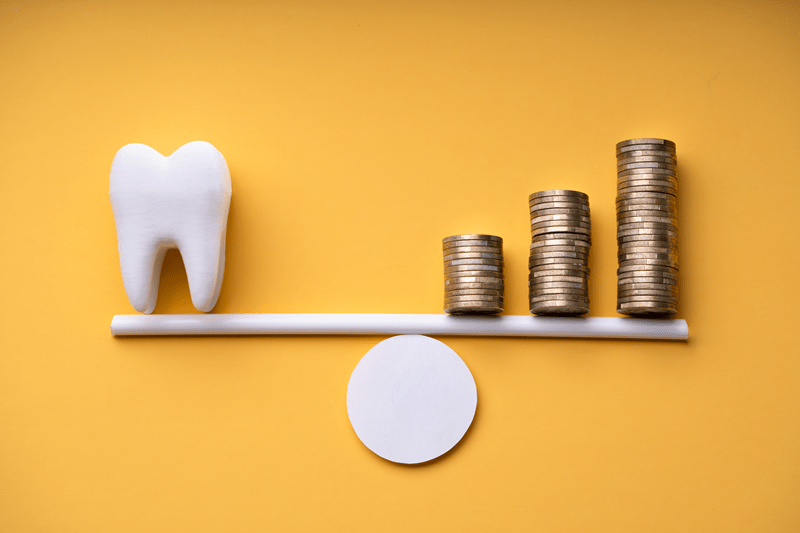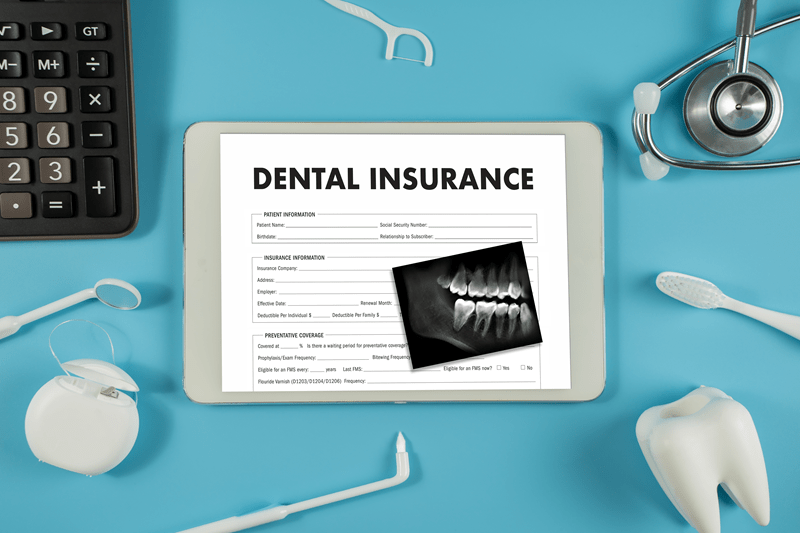
Choosing a proper dental insurance plan in the United States can be a really overwhelming task because there are dozens of providers, different cost structures, and various levels of coverage. Hence, people quite often choose the wrong plan because they just do not understand how to evaluate their choices. This is exactly why doing a proper dental insurance comparison is the most reliable way to secure a plan that meets your oral health needs and budget.
A close look at the benefits, exclusions, waiting periods, and premiums saves you from surprise expenses later on. Whether you're looking for affordable dental policy selection, the best dental coverage for preventive care, or simply trying to understand different dental plans reviewed, this guide breaks down all you need to know about the selection of dental policies in a straightforward and tabular manner.
Most U.S. health insurance plans do not include dental care, and out-of-pocket costs can be extremely high. While a routine cleaning may be fairly reasonable, fillings, crowns, extractions, and root canals quickly become expensive with no plan in place.
That is why many Americans seek affordable dental insurance that covers preventative services, reduces treatment costs, and covers major expenses. Since every insurer structures the benefits differently, comparison of dental insurance is vital to ensure that your money is well-spent for a plan that truly benefits you.
First, before comparing premiums or benefits, it is important to understand the major categories of plans normally involved in any dental insurance comparison.
PPOs are the most popular in the U.S. They offer flexibility in that you can see any dentist, but save more when you choose an in-network provider. That's why these plans often seem strong when you're looking at a review of dental plans, especially for families who want choices. They generally offer a deductible, annual maximum, and coinsurance based on the service provided.
These plans require staying in-network and selecting a primary dentist, but they make dental insurance more affordable with predictable co-pays. This would be a good option for any person who has minimal dental needs or is on a very tight budget.
These plans allow you to visit any dentist, but usually cover only a percentage of the dentist's fee. Although these premiums are more costly, flexibility is unparalleled. If you search for the best dental coverage and you want total freedom of choice, indemnity plans often come out on top when dental plans are reviewed.
These are not insurance. Instead, you pay an annual fee in exchange for discounted services with participating dentists. If budget is your top concern, this may be the most affordable option for dental insurance, though the coverage is limited.
Understanding these categories will better prepare you for the next step: analyzing plan details.
A good dental insurance comparison researches several aspects, not only the monthly cost of the insurance. The most important elements of a dental insurance comparison are:
Premiums among providers vary dramatically. When comparing dental premiums, remember: cheaper is not always better. Ultra-low premiums may also translate to limited coverage or high deductibles.
Compare the premium cost with the benefits, exclusions, and waiting periods that come with dental insurance. The cost of a premium isn't everything.
This is the amount paid out of pocket before the plan kicks in and starts covering services. Most PPO plans have deductibles, while most HMO plans do not. When you choose coverage, the deductibles become a major factor in dental policy selection, especially if you expect to get treatment during the year.
Most dental insurance plans have a limit on yearly benefits. Annual maximum benefits can range from $1,000 to $2,000. Higher annual maximums are where you'll find the best dental coverage. Comparatively speaking, when comparing monthly benefits to premium rates, this factor usually is the dividing line between good and average plans in dental insurance comparison.
Most U.S. dental plans incorporate a three-tiered system:
When shopping for dental plans online or brochure-to-brochure, pay close attention to these percentages. In some cases, hundreds of dollars can be saved or spent depending on the level of coverage.
If you have a preference, check to see if your dentist is in-network. Large PPO networks are one of the major selling points for individuals who want flexibility in their network. Most often, it is network differences that drive a consumer's entire dental policy selection process.
Many plans have a waiting period of several months before filling, crown, or major procedure coverage kicks in. When comparing dental insurance, always pay close attention to the waiting period details, especially if you know you'll need dental care immediately.
Not all plans cover:
That is why reading the fine print is so crucial. When comparing dental plans, exclusions are usually going to be what make a truly worthwhile plan stand out from one that may look good but is actually not worth much.

Every household is different, and your dental policy selection should reflect that.
If you're someone who would need mostly cleanings and the occasional filling, then look for more affordable dental insurance that will give strong preventative coverage with a low premium. You may want to look into a DHMO.
Plans that cover orthodontia are key. Check for policies that include either braces or aligner benefits, specifically when looking at dental plans.
You may need the best available dental coverage, high annual maximums, short waiting periods, and major procedure coverage. Comparing dental insurance, normally, PPOs or indemnity plans fare well in this category.
Many seniors need implants, dentures, or periodontal treatment. Since not all are created equal, these extra services must be carefully compared in dental insurance. High coverage PPO plans or specialized senior dental plans are usually a good option for seniors.
Many people make the mistake of only looking at the premiums. Full dental insurance comparison requires looking at the total yearly cost, which comprises:
When considering dental premiums, think about your average annual need for care. If you're someone who generally needs a lot of care in a year, a higher premium may actually save you more overall.
Reading the dental plans reviewed by some independent organizations, insurance brokers, or consumer review platforms will provide insights you might not find in any brochure.
Common facets in the reviews include:
These reviews will significantly streamline your process of choosing a dental policy by leading you to the best dental coverage without being lost in jargon.
Affordable doesn't just mean "cheap." The best affordable dental insurance plans offer:
When comparing dental insurance, its affordability must be based on value, not price.
These types of commonly occurring mistakes can be avoided by cautious dental insurance comparison.
After information is gathered, numbers are compared, and dental plans are reviewed, you should consider weighing the,
The right plan will balance cost, convenience, and coverage in a manner that matches your needs. Your decision should come from a thorough dental insurance comparison backed by accurate, easy-to-verify information.
Picking a dental plan in the U.S. need not be such an enigma. Structured dental insurance comparison helps narrow down your choices, confirming that your benefits match your dental needs and budget.
Careful premium comparisons, assessing coverage levels, reading through reviewed dental plans, and understanding how each option aligns with your priorities are the only ways to make a confident, informed decision. The right approach to choosing a dental policy will result in getting the best dental coverage, saving money, and avoiding unexpected expenses that ensure long-term oral health, thus keeping the plan truly affordable dental insurance for the household.
This content was created by AI